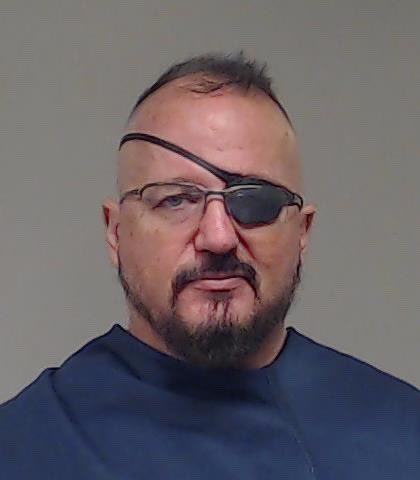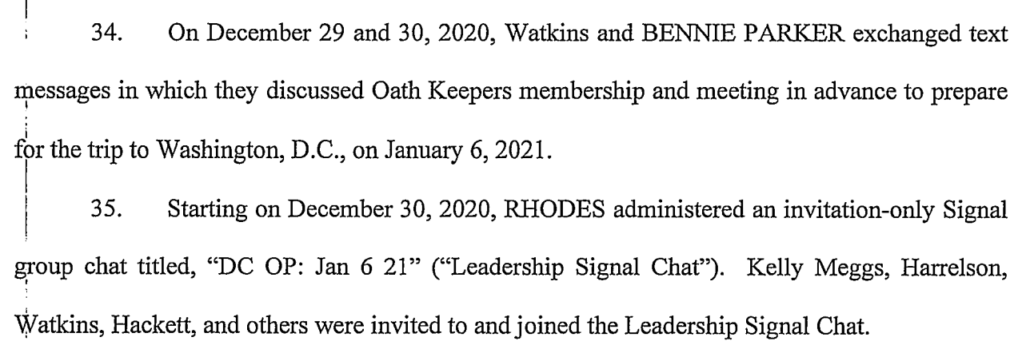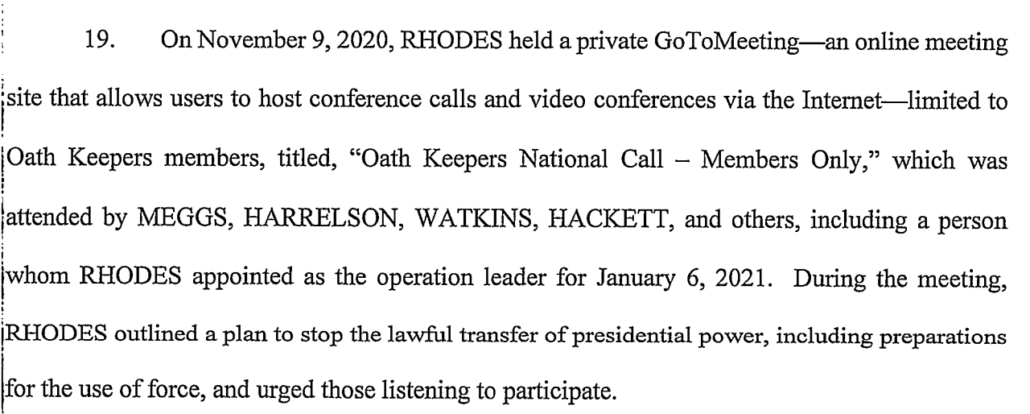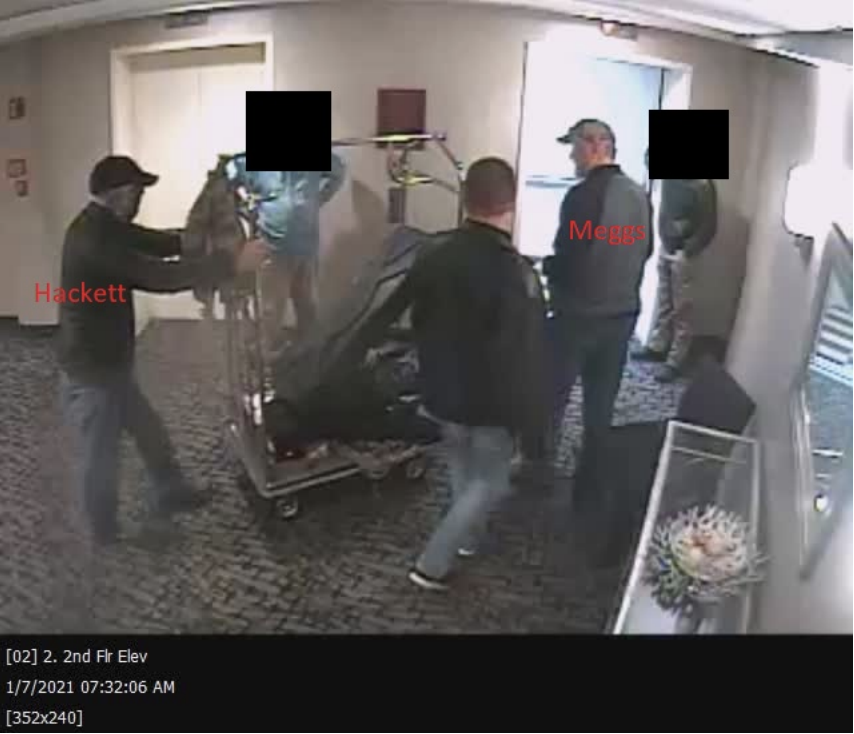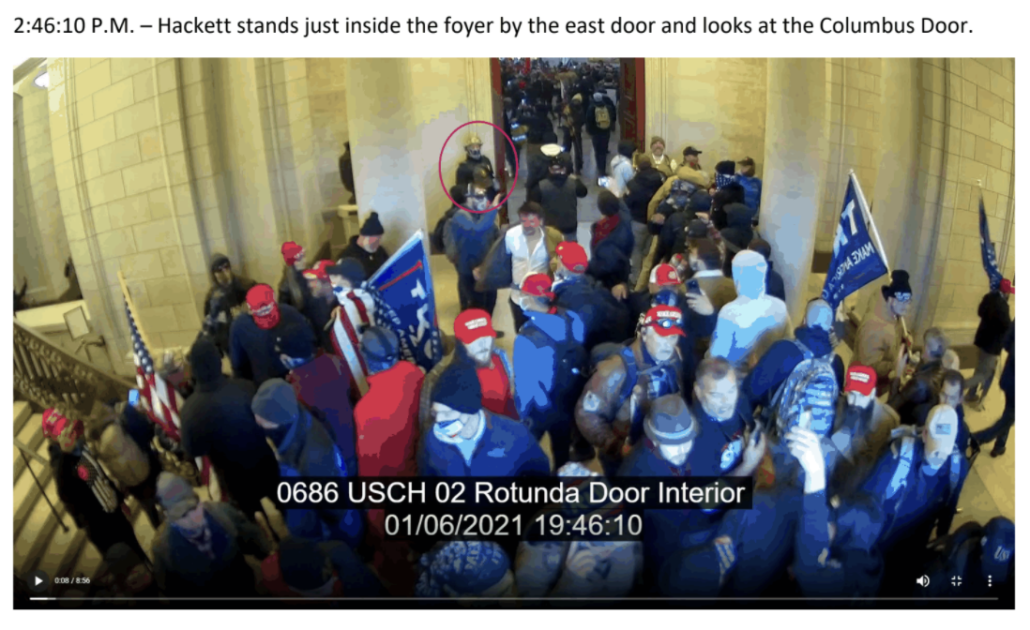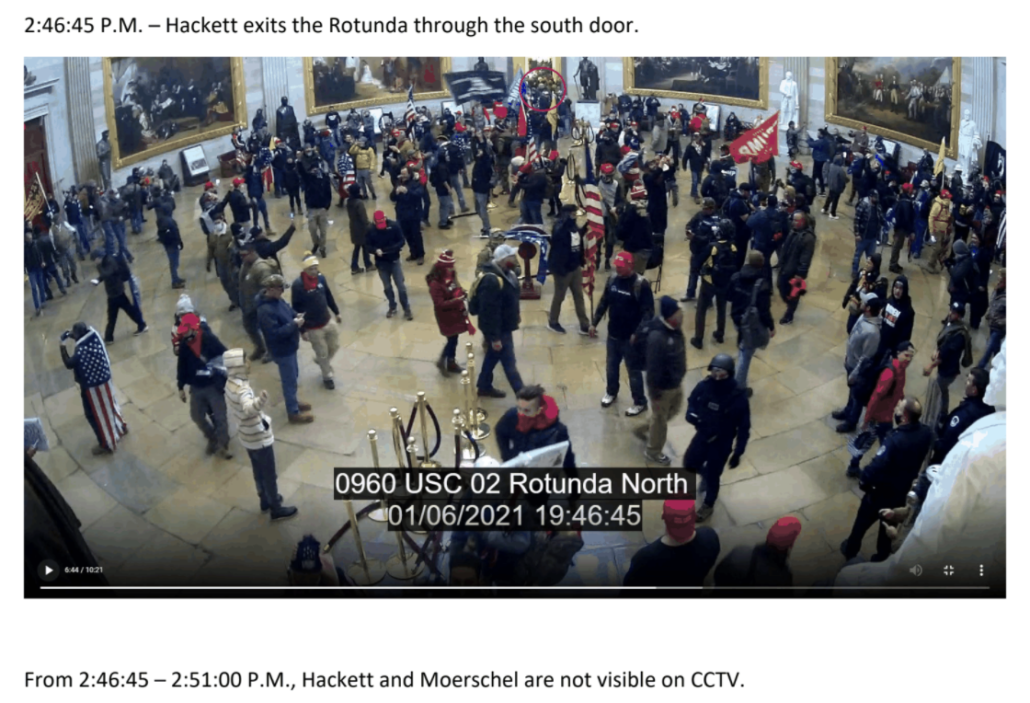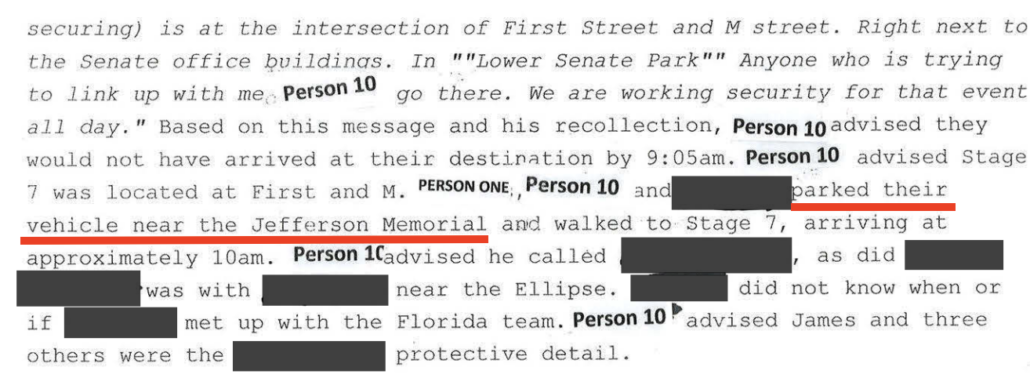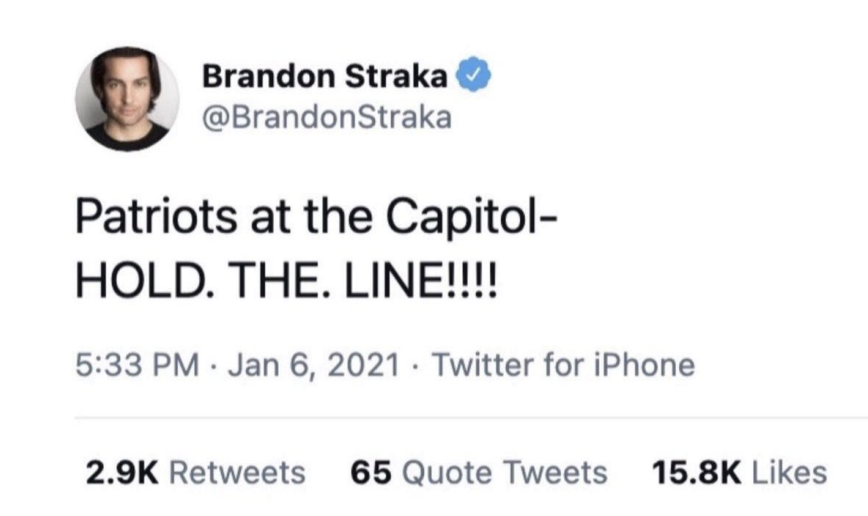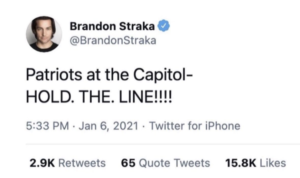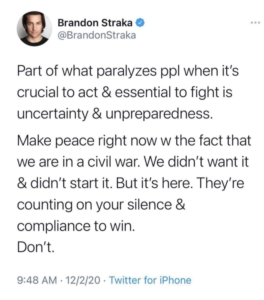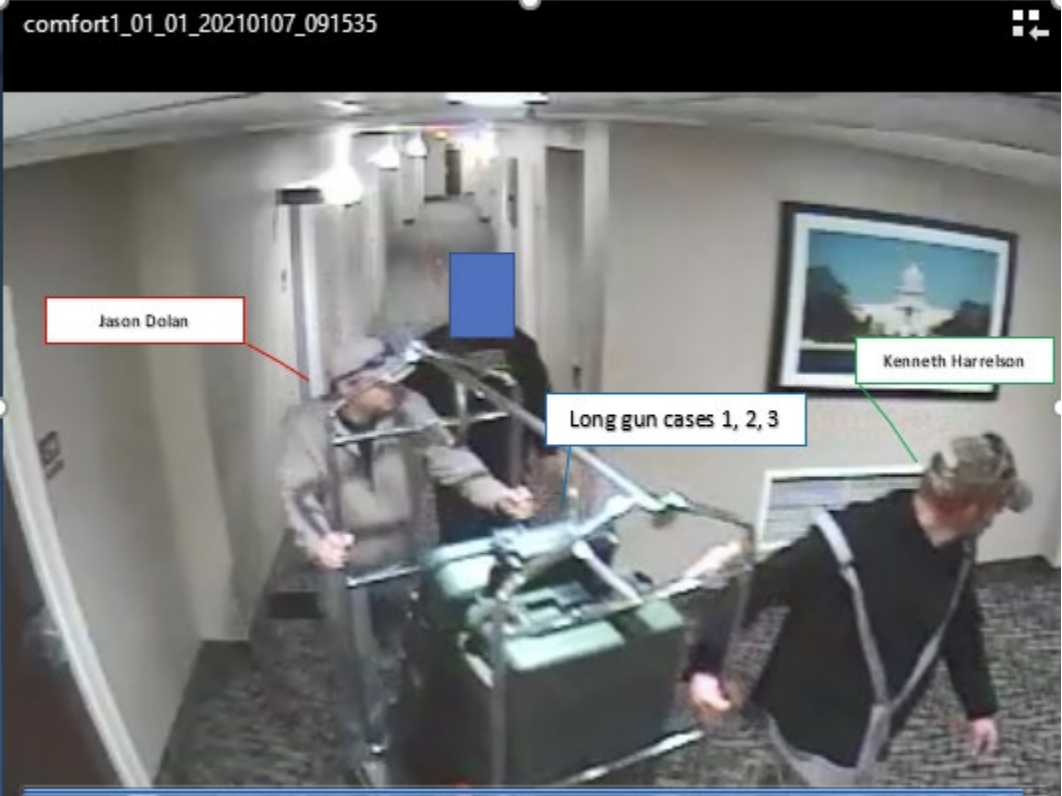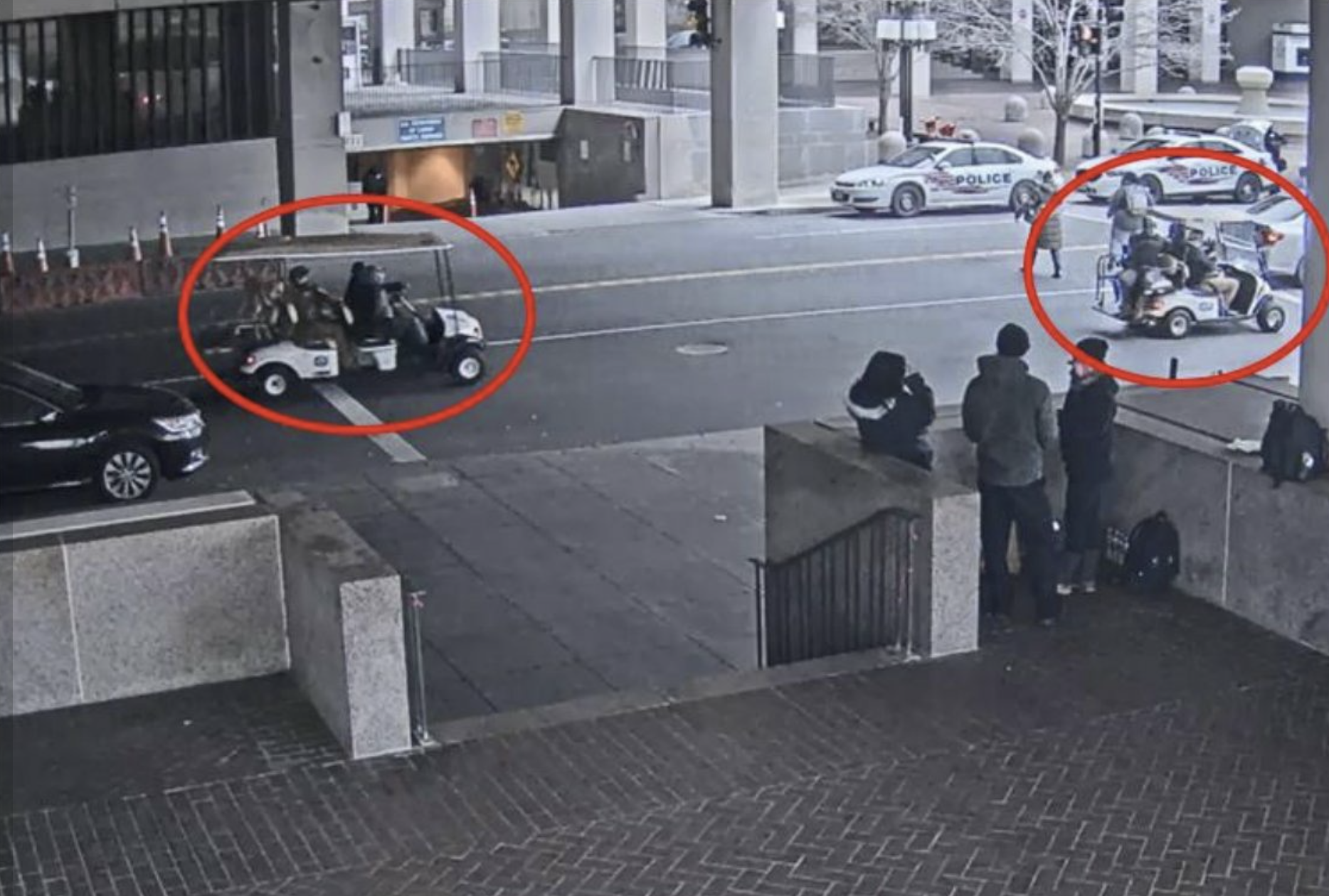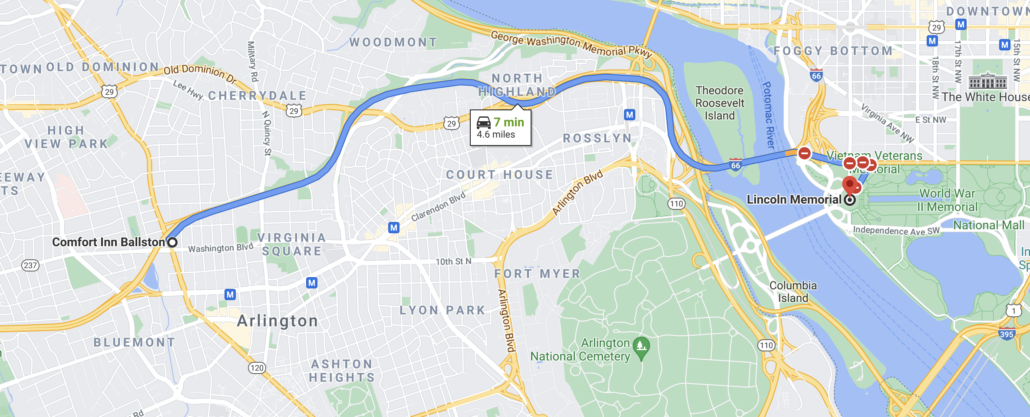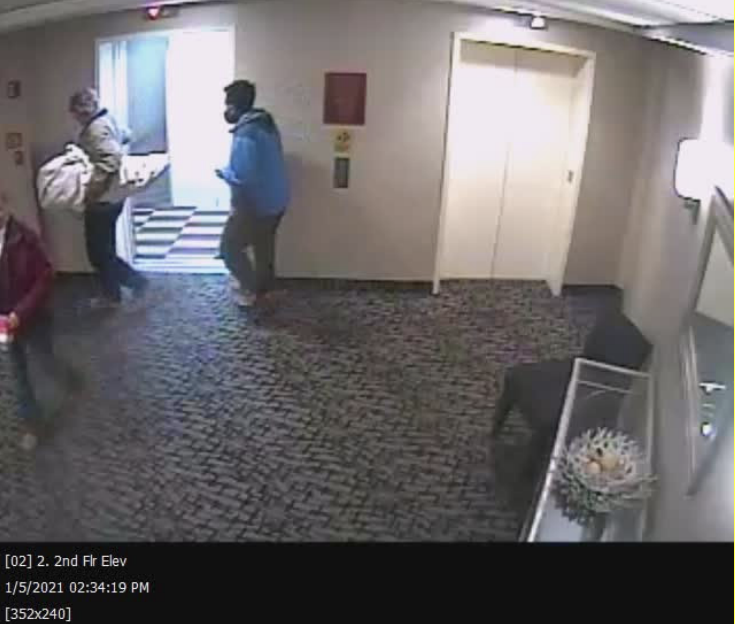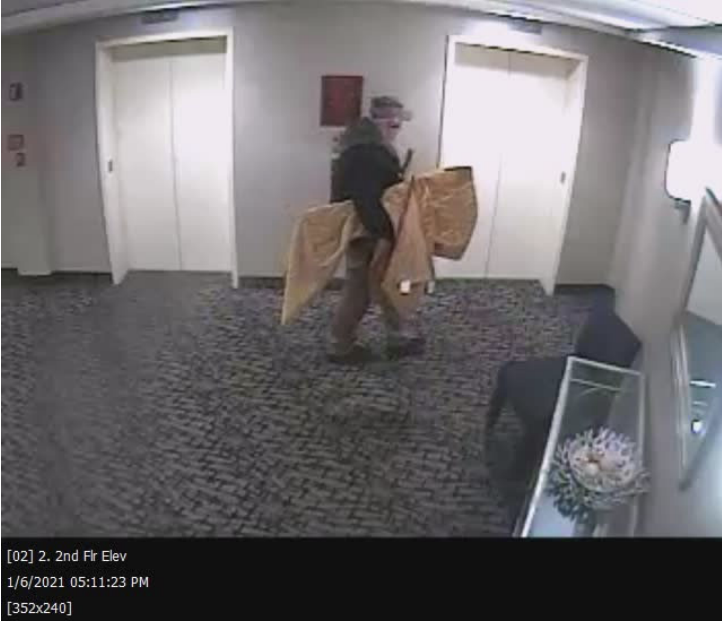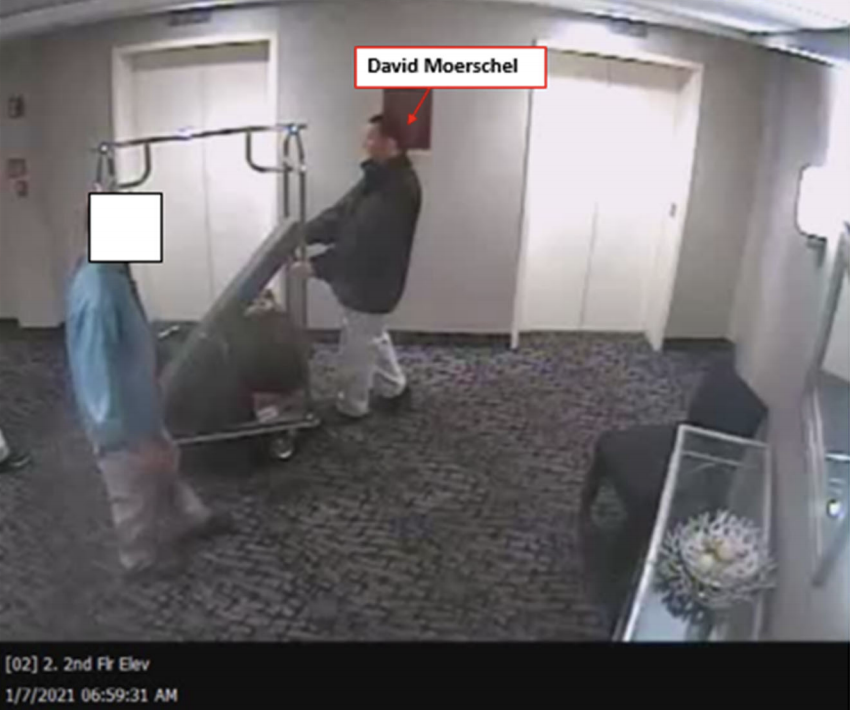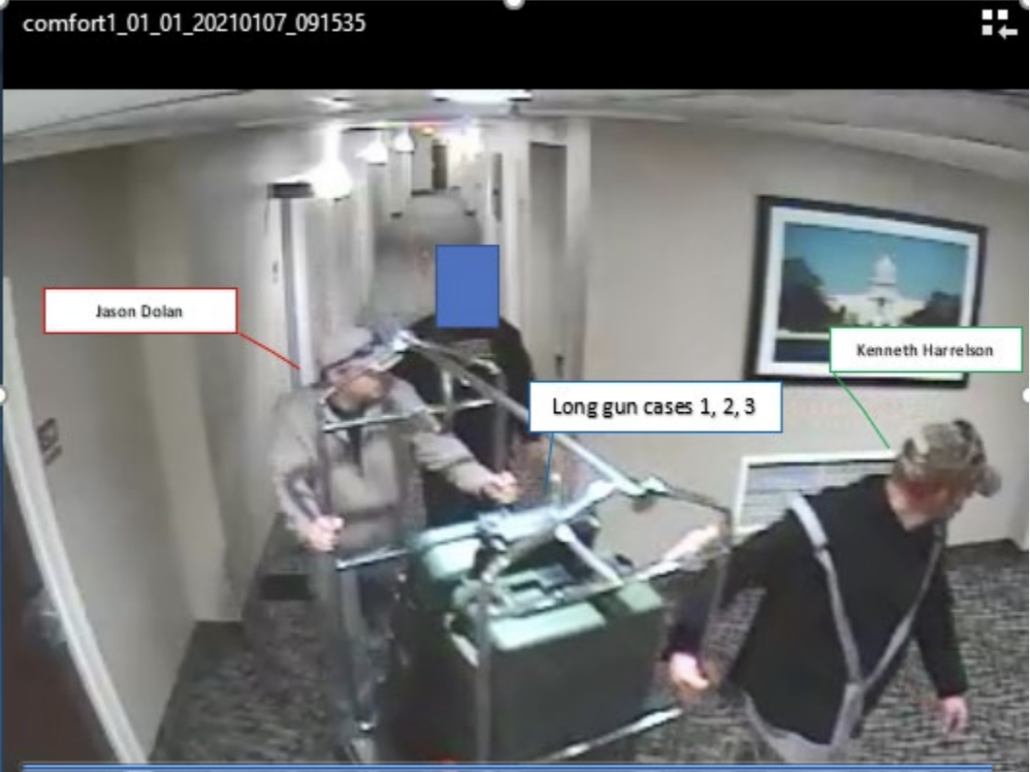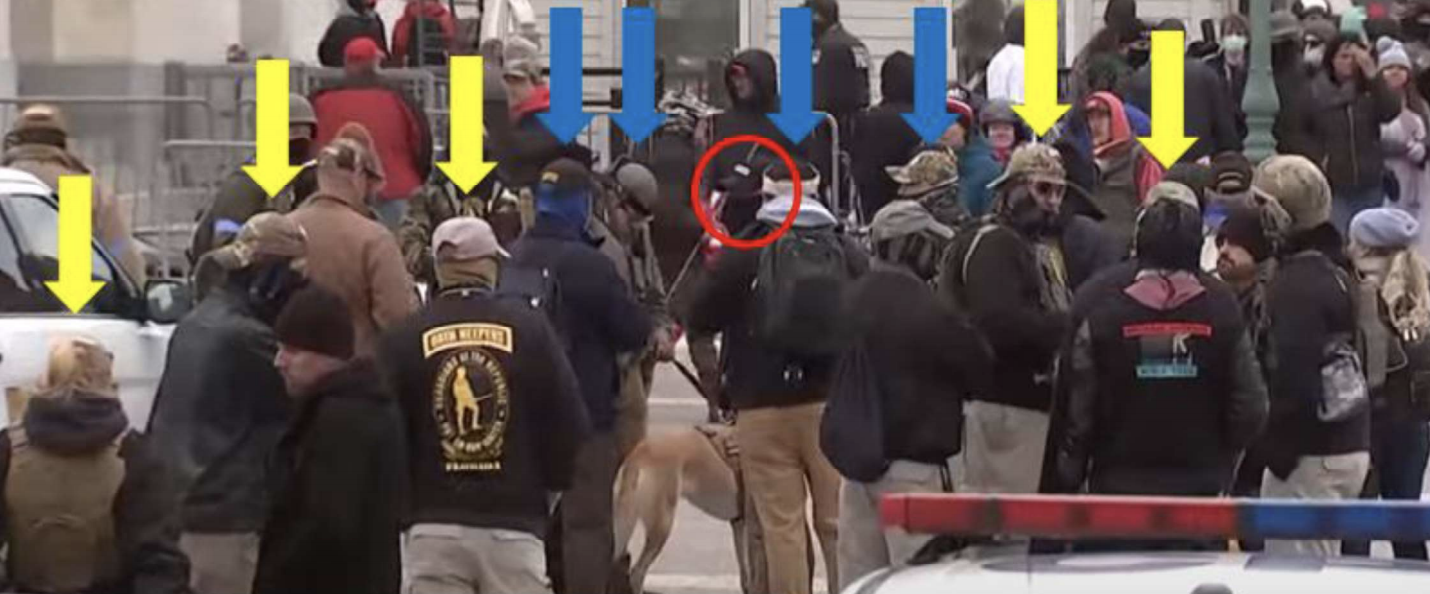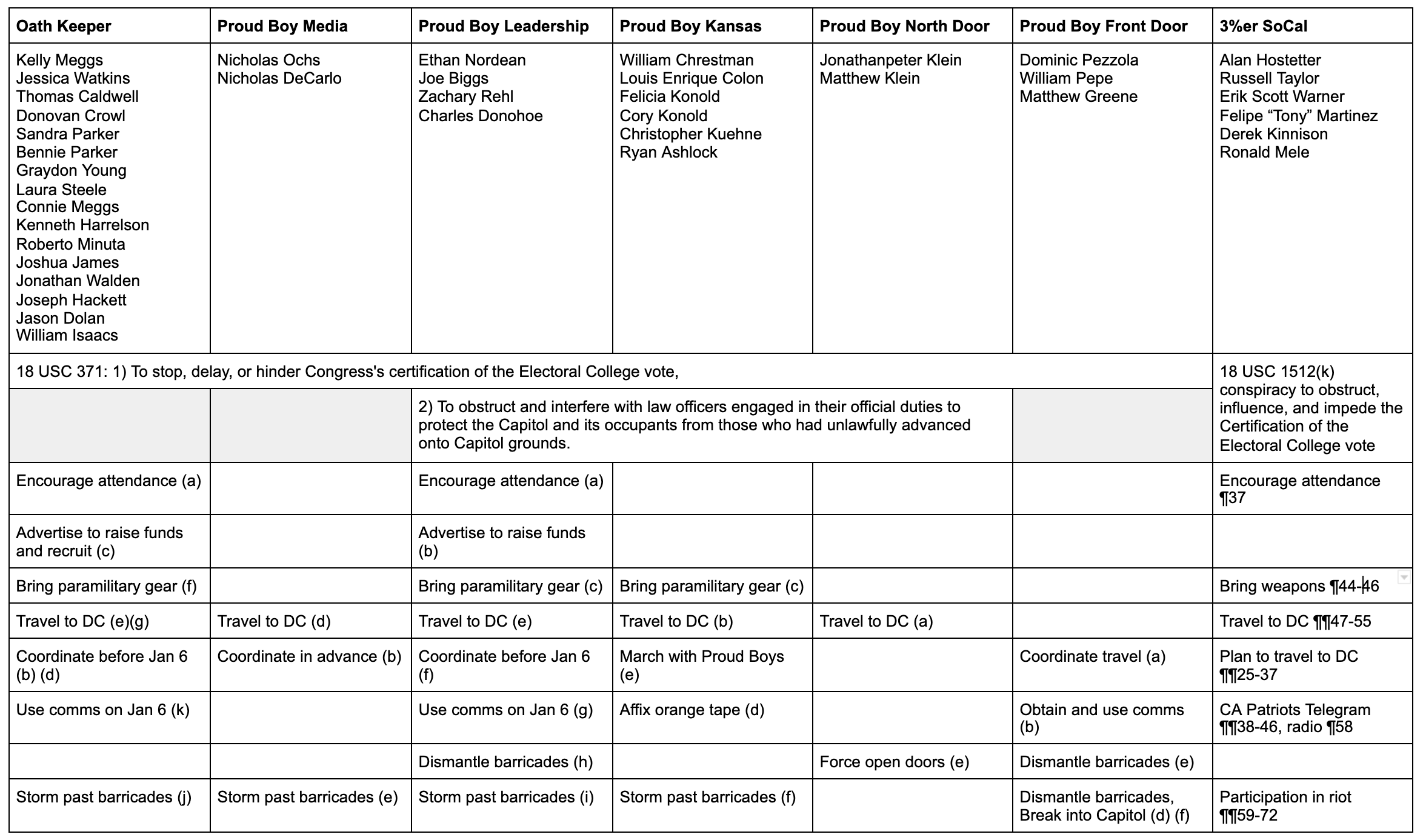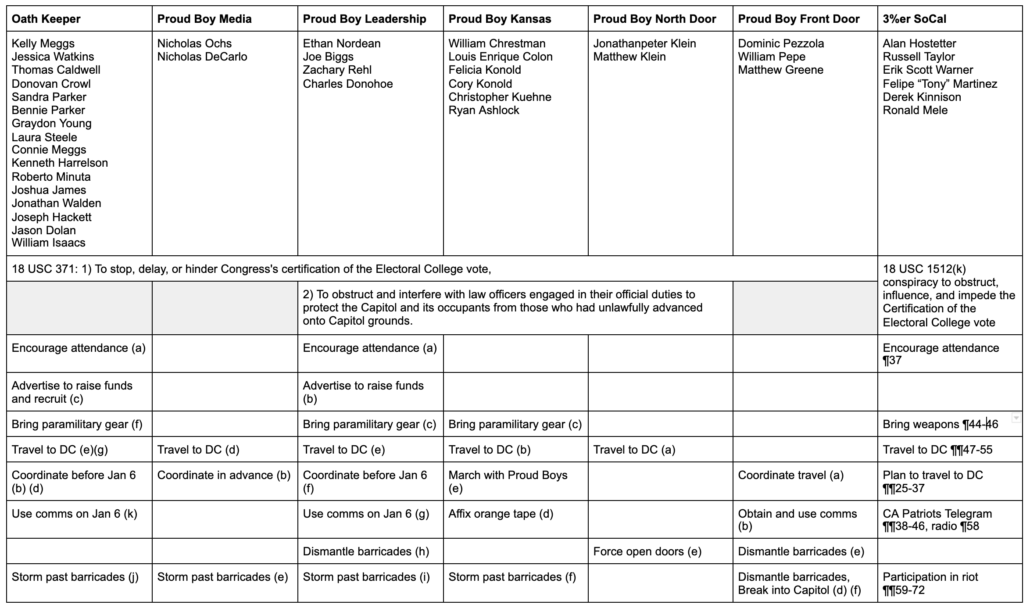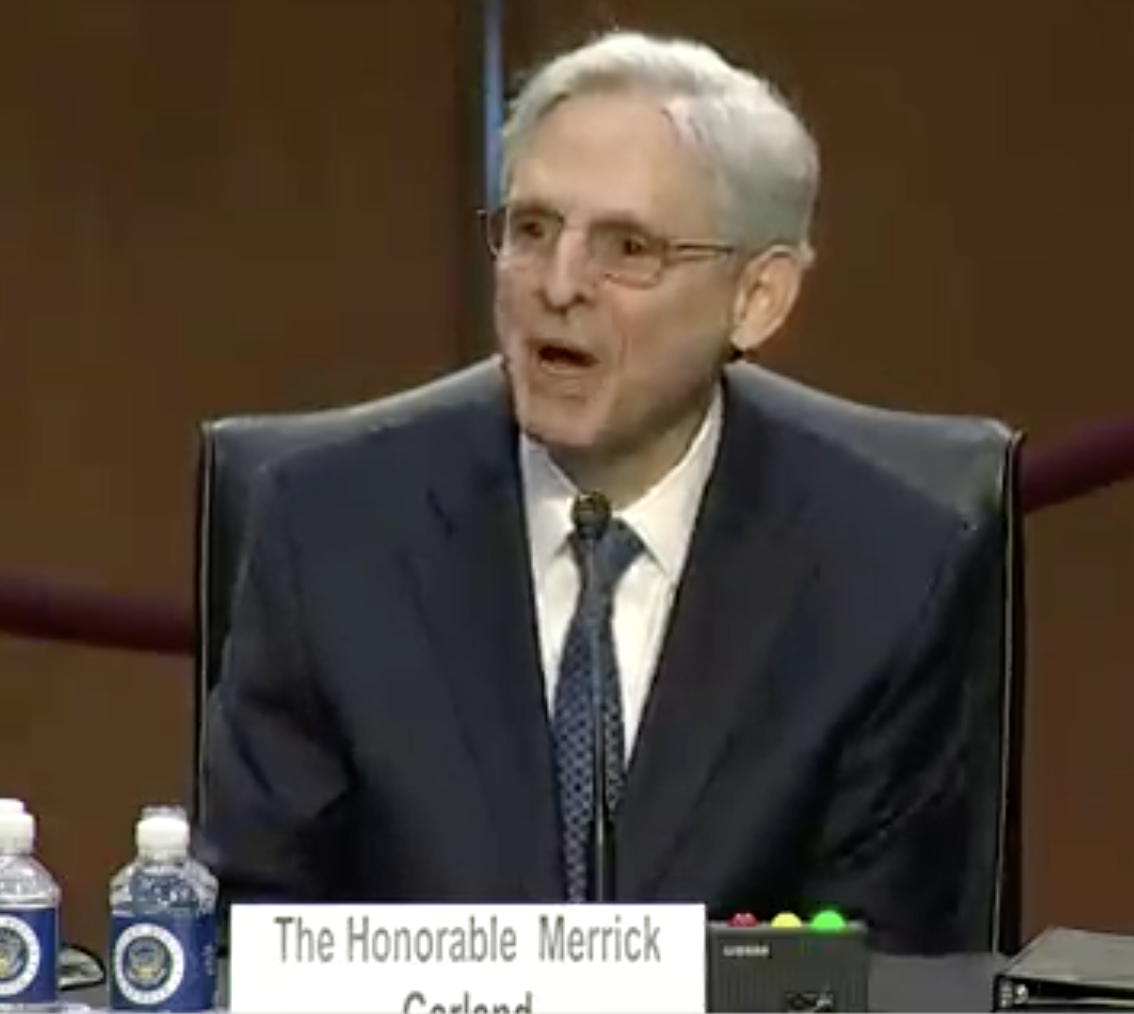Stewie’s Assault Rifle: Comings and Goings in the Sedition Militia
I’d like to return to what DOJ did with the Oath Keeper indictments.
As I explained, one thing the sedition indictment did is provide DOJ an easy way to split the unwieldy 17-person indictment into two trials. The first, the sedition trial, includes a barely manageable 11 people, all of whom played a leadership role and/or an active role in putting together the Quick Reaction Force stashed at the Comfort Inn in Ballston.
The second, with seven people charged, named “Crowl” after Donovan Crowl, is still just a conspiracy to obstruct the peaceful transfer of power, though charged under the obstruction statute (18 USC 1512(k)), making the potential sentence for the conspiracy charge higher even for those who, like James Beeks, really just hopped on a stack at the last minute. On top of everything else, these defendants now face the prospect of going to trial after what will surely be a high profile sedition trial, which will make it a lot harder to convince a jury of one’s innocence.
In addition, curiously, DOJ charged Jonathan Walden by himself with just obstruction and trespassing.
Whether DOJ charged Walden by himself in preparation of a plea from him or for some other reason, charging him by himself makes a change in naming convention a lot easier.
In past Oath Keeper conspiracy indictments, DOJ referred to charged defendants in all-caps, those who entered cooperating plea deals in standard text, and those who hadn’t been charged yet using a number system, with Person One being Rhodes, as in this paragraph from the December indictment.
The Crowl indictment generally adheres to this practice, listing both those charged in Crowl and those charged with sedition at the beginning to make it clear it’s all one conspiracy.
But because of the way the Crowl indictment is scoped — focusing on what the sedition indictment calls “Stack One” (the one that busted into the Capitol in spectacular fashion) — certain people are not named at all. Roberto Minuta and Joshua James from the sedition indictment aren’t there, Walden, now spun off on his own is not there.
And cooperating witness, Mark Grods, is not there, at all. Whatever references there are to him just refer to him as a co-conspirator.
It’s not just Grods. A bunch of people, formerly numbers, are just co-conspirators now. Perhaps DOJ did that to sow as much paranoia as possible, so that the defendants have no idea who has flipped and who hasn’t. But I’m particularly interested in Grods’ absence for reasons I’ll explain in a follow-up.
Anyway, this naming convention is most notable with the treatment of Person Ten, who has been identified as Michael Simmons by Mother Jones and others, but who is referred to in the sedition indictment as “the operation leader.”
As with Walden, it’s not entirely clear what’s up with Simmons. It cannot be the case that DOJ decided he had no criminal exposure. As prosecutor Kathryn Rakoczy noted in December, Simmons’ attempts to pretend he didn’t know about the insurrection in May FBI interviews “lack credibility.”
Person Ten’s Statements Are Lacking in Credibility
Person Ten, as an uncharged individual who was aware that others have already been charged, had a motive to downplay or disregard both his own involvement and any preplanning efforts. And documentary evidence contradicts Person Ten’s blanket denials. For instance, on October 8, 2021, the government disclosed a Signal chat thread named “Jan 5/6 DC Op Intel team,” which included Person One, Person Ten, codefendant Joshua James, and about seven other individuals. On the Signal thread, shortly before 2:00 p.m. on January 6, a participant posted a video titled “live stream of patriots storming capital.” Another participant asked, “Are they actually Patriots – not those who were going to go in disguise as Patriots and cause trouble[?]” Person Ten authoritatively answered, “[T]here [sic] patriots.” Person One added, “Actual Patriots. Pissed off patriots[.] Like the Sons of Liberty were pissed off patriots[.]” Codefendant Joshua James followed with, “Were coming to Capitol ETA 30 MIN[.]”
The Sixth Superseding indictment alleges that at 2:14 p.m. on January 6, Person Ten informed the “DC OP: Jan 6 21” Signal chat that “The[y] have taken ground at the capital,” and, “We need to regroup any members who are not on mission[.]” ECF 513 ¶ 125. At 3:05 p.m.— twenty minutes after Defendant Harrelson and other codefendants breached the Capitol, and ten minutes before Defendant James and his second wave of coconspirators breached the same doors—Person Ten also messaged another individual, “Were [sic] storming the capital.”
So something had to have happened with Simmons, with a cooperation deal a likely explanation. That’s why I’m interested in a few details laid out in the sedition indictment.
The main QRF for the people charged in the sedition indictment was (as I never tire of saying) in the Ballston Comfort Inn. Here’s what these guys looked like toting their gun cases around on luggage carts on the surveillance footage.
But before Kelly Meggs and Thomas Caldwell and others settled on the Ballston Comfort Inn for the QRF, Rhodes offered to store weapons for Meggs in the trunk of Simmons’ car.
50. On January 2, 2021, RHODES messaged MEGGS on Signal, “If you want to stow weapons with [the operation leader] you can. He’ll have a secure car trunk or his hotel room (or mine).” MEGGS responded, “Last night call … we discussed a QRF RP so we may do that. As well as the NC team has a hotel room close by.” RHODES messaged, “Ok, We WILL have a QRF. this situation calls for it.” [my emphasis]
The sedition indictment seems to describe Joshua James dropping off weapons at the Hilton Garden Inn in Vienna, VA.
68. On January 5, 2021, JAMES dropped off firearms and ammunition that he, ULRICH, and other co-conspirators had transported to the Hilton Garden Inn in Vienna, Virginia, where RHODES, JAMES, MINUTA, and others were staying.
One of the “others” staying at the Hilton Garden Inn referred to in this paragraph, the earlier indictment makes clear, was Simmons.
On January 4,2021, PERSON TEN checked into the Hilton Garden Inn in Vienna, Virginia. The room was reserved and paid for using a credit card in PERSON ONE’s name.
Anyway, it’s not entirely clear whether that paragraph 68 means that James dropped off weapons he had driven to Vienna at the Comfort Inn, or whether he brought those weapons to the Hilton Garden Inn and they stayed there. It’s worth noting, though, that by leaving Grods out of the sedition indictment, DOJ left out this paragraph from earlier indictments.
On January 2, 2021, Grods messaged JAMES on Signal and asked, “So, I guess I am taking full gear less weapons? Just reading through all the posts. Would rather have it and not need it.” JAMES responded, “Yeah full gear… QRF will have weapons Just leave em home.”
That is, by leaving Grods out, DOJ got to leave out some details about the fate of James’ weapons, too.
And while the sedition indictment has a ton of new details about Rhodes serially arming himself as he drove to insurrection…
On January 3, 2021, RHODES departed Granbury, Texas, and began traveling to the Washington, D.C., metropolitan area. While traveling, RHODES spent approximately $6,000 in Texas on an AR-platform rifle and firearms equipment, including sights, mounts, triggers, slings, and additional firearms attachments.
[snip]
On January 4, 2021, while still traveling toward the Washington, D.C., metropolitan area, RHODES spent approximately $4,500 in Mississippi on firearms equipment, including sights, mounts, an optic plate, a magazine, and various firearms parts.
… The sedition indictment provides not one detail of where Stewie’s personal arsenal ended up once he got to VA. It doesn’t say he kept all those weapons at the Hilton Garden Inn in Vienna. It doesn’t say the weapons got moved to the Comfort Inn in Ballston.
The sedition indictment does, however, explain that Rhodes and Simmons drove to DC together the morning of insurrection.
At approximately 8:30 a.m., RHODES and the operation leader, and others departed a hotel in Virginia for Washington, D.C., and drove to the Capitol area.
So Rhodes and Simmons traveled to DC in something that had a trunk, like the one days earlier where, Rhodes said, Meggs could stash his weapons.
And I find that interesting because Rhodes and Simmons weren’t together when the insurrection kicked off. Earlier indictments make clear that Rhodes was trying to meet up with Simmons as everyone started converging on the Capitol.
At 2:06 p.m, PERSON ONE sent another message to the Leadership Signal Chat asking for PERSON TEN’s location before stating, “I’m trying to get to you.”
And in fact, Rhodes kept trying to get people to come to the south side of the Capitol, even though all the action was happening north of there.
At 2:25 p.m. PERSON ONE forwarded PERSON TEN’s message (“The have taken ground at the capital[.] We need to regroup any members who are not on mission.”) to the Leadership Signal Chat and instructed: “Come to South Side of Capitol on steps” and then sent a ‘photograph showing the southeast side of the Capitol.
Rhodes’ 2:06 text got cut from the sedition indictment, though his 2:25 one made the cut.
At 2:32, as the Stack was assembling outside the East steps of the Capitol, Kelly Meggs called Rhodes and got conferenced into an already existing call with Simmons.
At 2:32 p.m., MEGGS places a phone call to RHODES, who was already on the phone with the operation leader. RHODES conferenced MEGGS into the call.
Minutes later, after Kelly Meggs and the first stack busted into the Capitol, and Meggs walked towards the office of Pelosi (whom he threatened to kill on election day) with Joseph Hackett and others, Hackett came back out to the entrance as if he was trying to meet up with someone, only to give up and leave.
The detention memo suggests they — apparently including Berry and Connie Meggs, though the detention motion doesn’t mention them — went from here to stand outside Pelosi’s office, and then Hackett — apparently by himself — came back through the Rotunda, stood outside the East Door, looking outward, as if waiting to meet with someone.
Hackett then enters back into the Capitol, goes back to where he (apparently) left Moerschel, Harrelson, and Meggs, along with Berry and Connie Meggs (though they aren’t mentioned) and then he and Moerschel exit the building.
Neither Rhodes nor Simmons entered the Capitol.
To be clear: we have no idea what happened to Simmons and it’s not clear whom Hackett was looking for as Kelly Meggs attempted to hunt down Nancy Pelosi.
But I think it distinctly possible that Simmons drove Stewie’s weapons into DC. Which — particularly if there were a plot to assassinate Nancy Pelosi — would increase Simmons’ exposure significantly.
Update: I just re-read Mike Simmons’ 302s. And he claims that he parked by the Jefferson Memorial.
That’s the location of the “sea” landing point for the QRF teams.
On the evening of January 2, 2021, at about 5:43 p.m., KELLY MEGGS posted a map of Washington, D.C. in the Leadership Signal Chat, along with the message, “1 if by land] North side of Lincoln Memorial[,] 2 if by sea[,] Corner of west basin and Ohio is a water transport landing 11” KELLY MEGGS continued, “QRF rally points[.] Water of the bridges get closed.”

